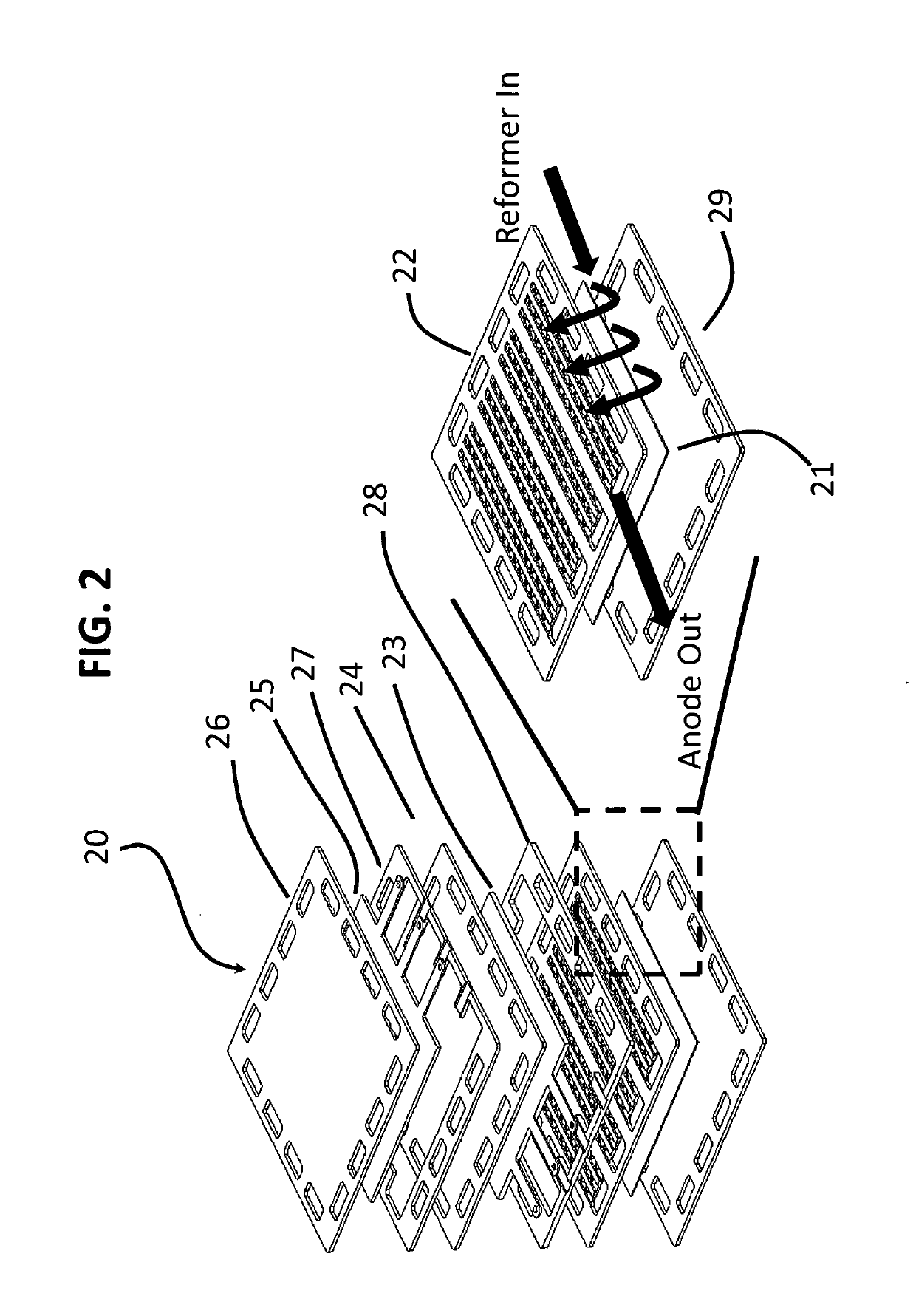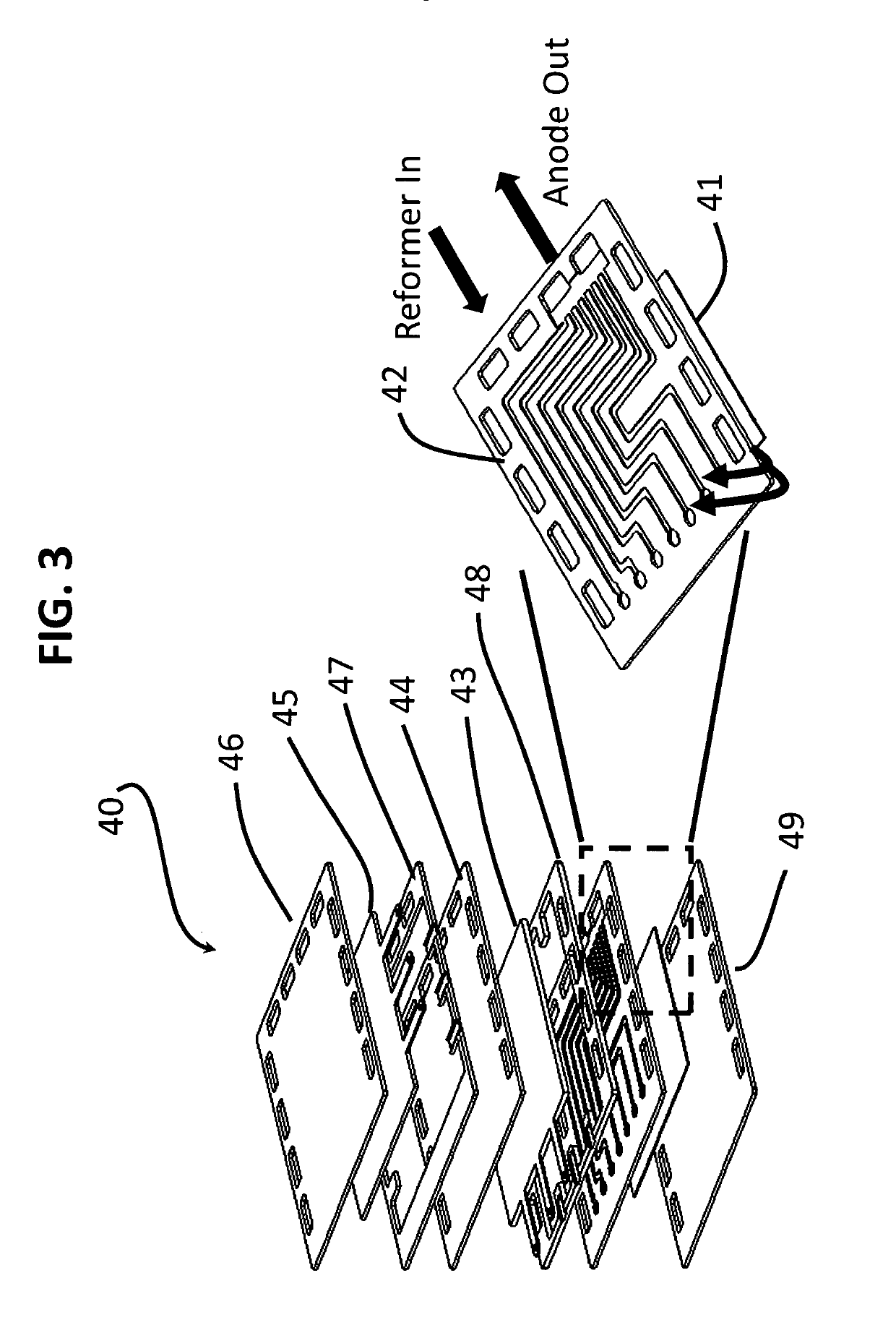Solid oxide fuel cell with internal reformer
a fuel cell and reformer technology, applied in the field of solid oxide cells, can solve the problems of imposing limitations on the size and portability of fuel cells, affecting the efficiency of fuel electrodes, so as to reduce weight, dimensions and complexity, and facilitate the manufacture and uniformity of temperature. uniform
- Summary
- Abstract
- Description
- Claims
- Application Information
AI Technical Summary
Benefits of technology
Problems solved by technology
Method used
Image
Examples
Embodiment Construction
[0072]In basic concept, the solid oxide cell (SOC) described herein is capable of functioning in forward direction as a solid oxide fuel cell (SOFC) and in reverse direction as a solid oxide electrolysis cell (SOEC). Each solid oxide cell, which is typically repeated multiple times in each fuel cell stack, comprises a sandwich configuration in the following order:[0073](i) an oxygen electrode,[0074](ii) a solid oxide electrolyte,[0075](iii) a fuel electrode,[0076](iv) a fuel manifold; and[0077](v) at least one layer of mesh disposed adjacent to the fuel manifold, on a side of the fuel manifold opposite a side facing the fuel electrode.
[0078]In one exemplary embodiment, the at least one layer of mesh supports a reforming catalyst capable of either steam reforming (SR), catalytic partial oxidation (CPDX), or autothermal reforming (ATR). In this embodiment, the at least one layer of mesh having the reforming catalyst supported thereon provides for a reformer integrated into each SOC re...
PUM
 Login to View More
Login to View More Abstract
Description
Claims
Application Information
 Login to View More
Login to View More - R&D
- Intellectual Property
- Life Sciences
- Materials
- Tech Scout
- Unparalleled Data Quality
- Higher Quality Content
- 60% Fewer Hallucinations
Browse by: Latest US Patents, China's latest patents, Technical Efficacy Thesaurus, Application Domain, Technology Topic, Popular Technical Reports.
© 2025 PatSnap. All rights reserved.Legal|Privacy policy|Modern Slavery Act Transparency Statement|Sitemap|About US| Contact US: help@patsnap.com



